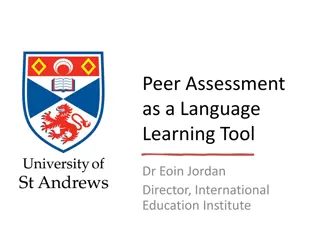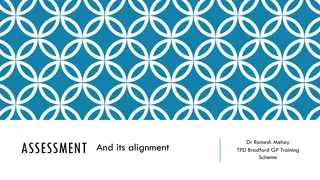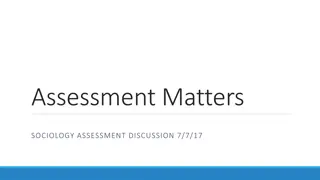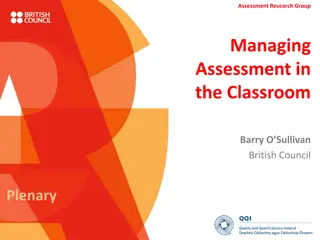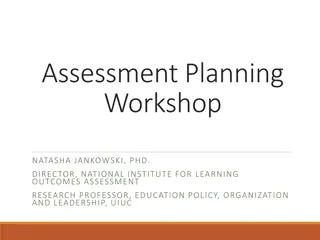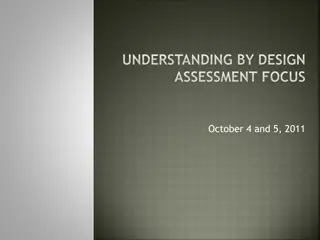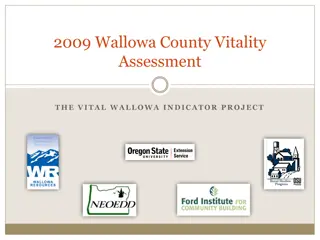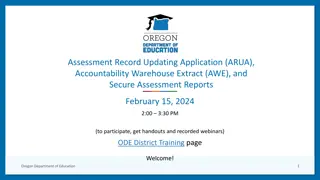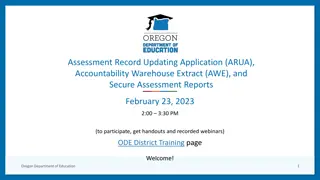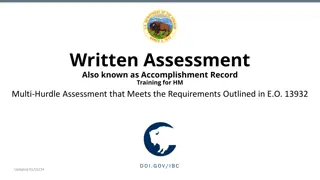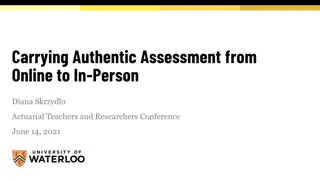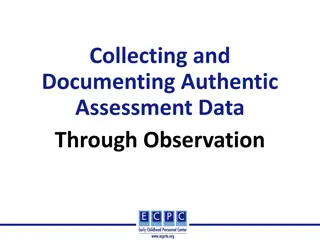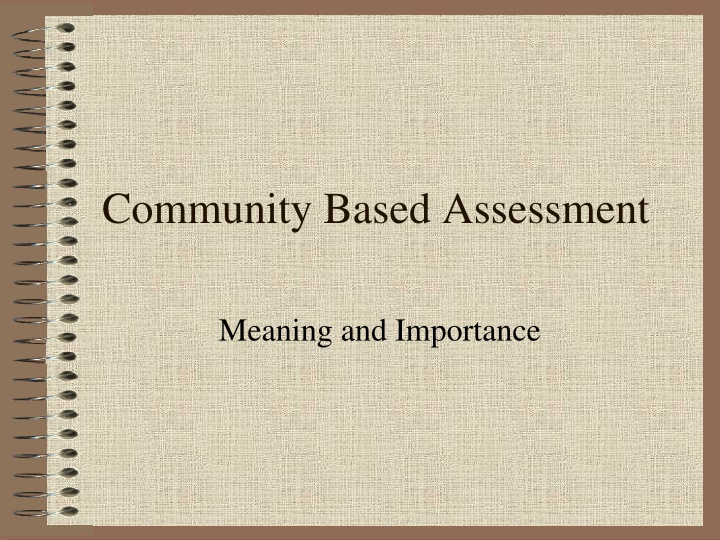
Empowering Communities Through Participatory Assessment Methods
Explore the significance of community-based assessment in understanding needs, solving problems, and driving sustainable development. Discover how participatory approaches enable communities to take charge of their own growth and well-being.
Download Presentation

Please find below an Image/Link to download the presentation.
The content on the website is provided AS IS for your information and personal use only. It may not be sold, licensed, or shared on other websites without obtaining consent from the author. If you encounter any issues during the download, it is possible that the publisher has removed the file from their server.
You are allowed to download the files provided on this website for personal or commercial use, subject to the condition that they are used lawfully. All files are the property of their respective owners.
The content on the website is provided AS IS for your information and personal use only. It may not be sold, licensed, or shared on other websites without obtaining consent from the author.
E N D
Presentation Transcript
Community Based Assessment Meaning and Importance
Assessment of needs (welfare & developmental), problems, and concerns of the people by the people themselves by means of participatory methods Understanding the problems and needs of the people as they experience in contrast to assessment made by an external expert People know more about their problems, needs and the available options with regard to the solutions than the outsiders Given a chance, the people might solve their own problems in an efficient manner People s solutions are more sustainable than a solution imposed from outside
People have better control of the situation, when their own plan is executed Outsiders often deal with the apparent (superficial) problems; but people know the root causes. Community based assessment involves more brains to identify problems, assess their impact, plan for viable solutions, implement the action plan, monitor its progress and evaluate the outcome Community based assessment allows the people to take charge of their own development
Participatory methods for need assessment, planning and social impact assessment A) Community Need Assessment (CNA): CNA refers to participatory methods for need assessment CNA is the first step of community based assessment Inquiring about the development services within the community, their satisfaction with services, and the services needed further in the community with aim of community change that can build the capacity of community-based organisations that are designed to provide its residents services and development opportunities
CNA has four phases: Planning and organising phase Data collection Summarising and disseminating the needs assessment survey results and Sharing the results through public forums to facilitate action planning
Planning phase: Establishing partnership between community based organisations to be involved in need assessment; knowing each other and to develop specific goals and objectives for the need assessment process Information gathering: holding several meetings between organisation staff and other partners (grassroots groups or researchers)
Identify relevant stakeholders of the programme, programme staff, funders and the beneficiaries of the programme Learn more about the community, the organisation serves and its residents Review the literature available regarding the development or history information developed by programme staff Share expectations and approach regarding the needs assessment with other partners Discuss and identify potential users of the agenda likely to be generated by the needs assessment process of the programme,
Learn programme being assessed Learn about the organisational culture and its philosophy by interviewing staff Learn about the community the organisation serves by reviewing the available materials and touring the community Literature review to see what the recent research has to offer (results of previous need assessments / research methodology) about the organisation and the
Details development of service delivery Resources of the organisation and the programme Identify and learn about the programme that would most benefit from a need assessment Identify goals and objectives for the needs assessment Identify the strategy to conduct a need assessment of the community Define goals for the needs assessment Discuss roles and expectations for each partner Defining specific purpose of the needs assessment: Use of the data collected: to set a new agenda, support a new programme, or support new changes in service delivery or policies Time line for the needs assessment Identify the target population, selection of the sample from the population of programme in terms of implementation and


